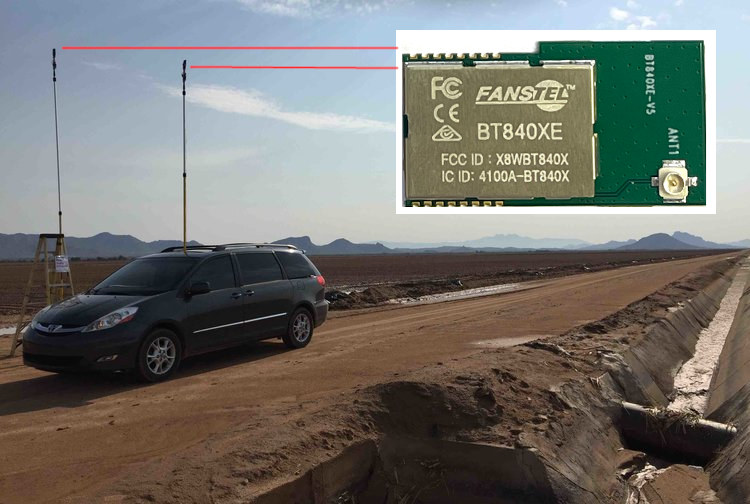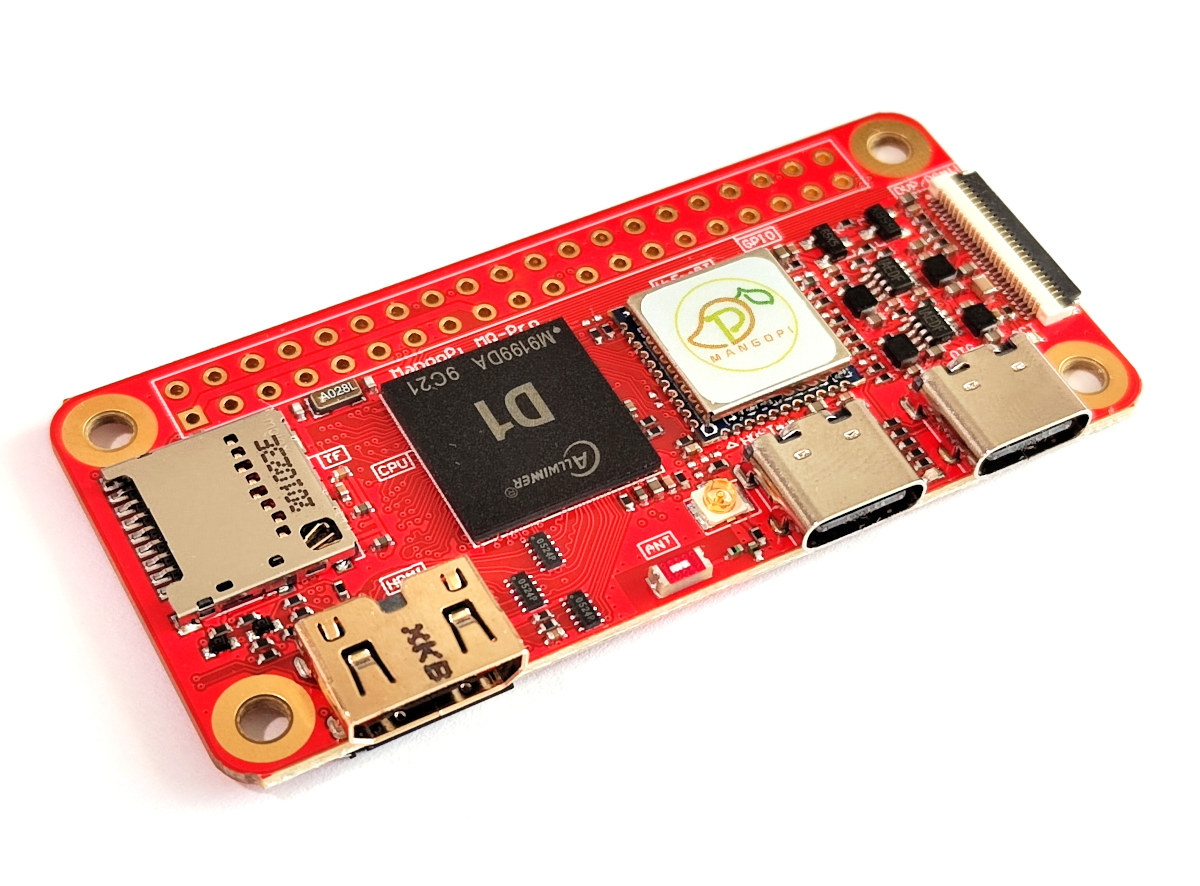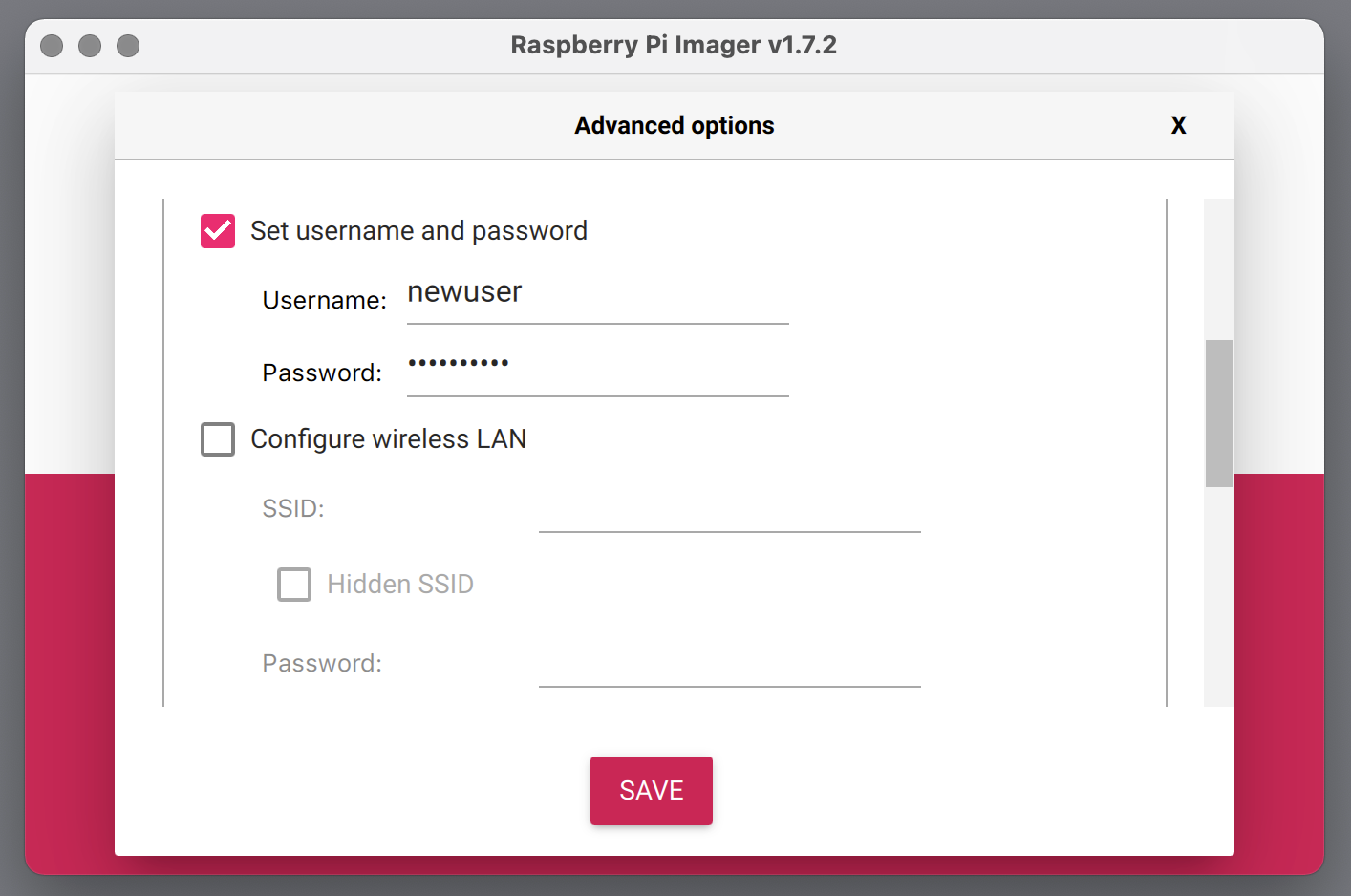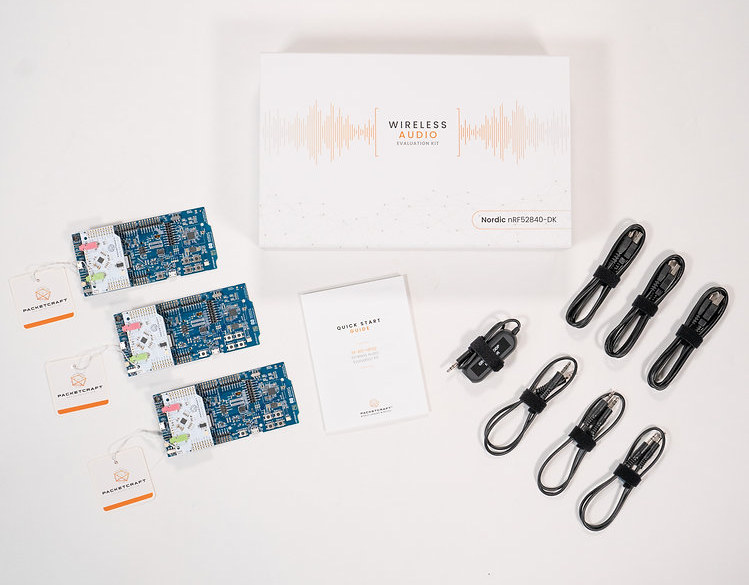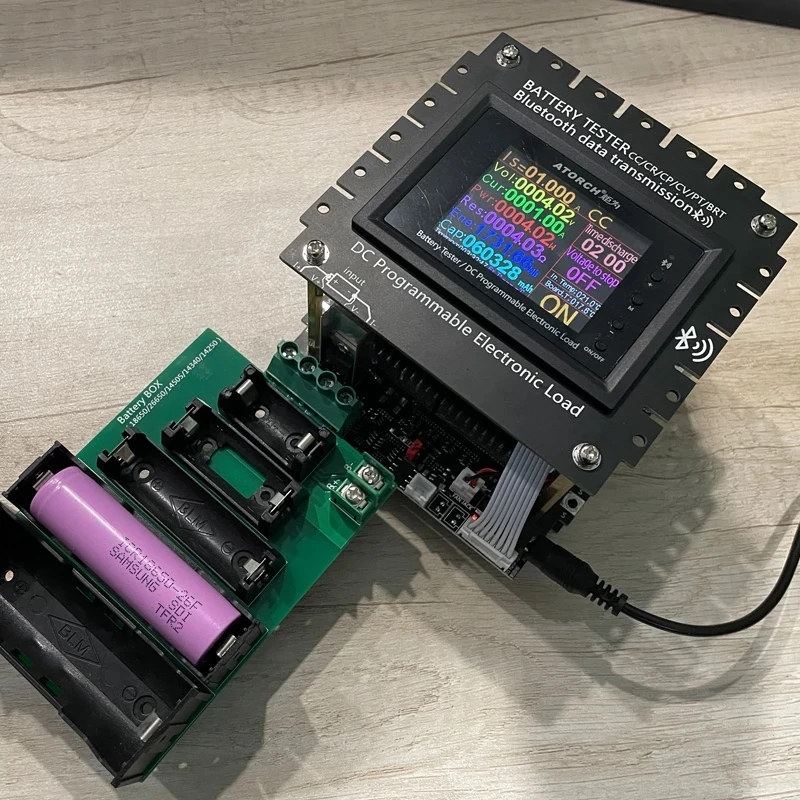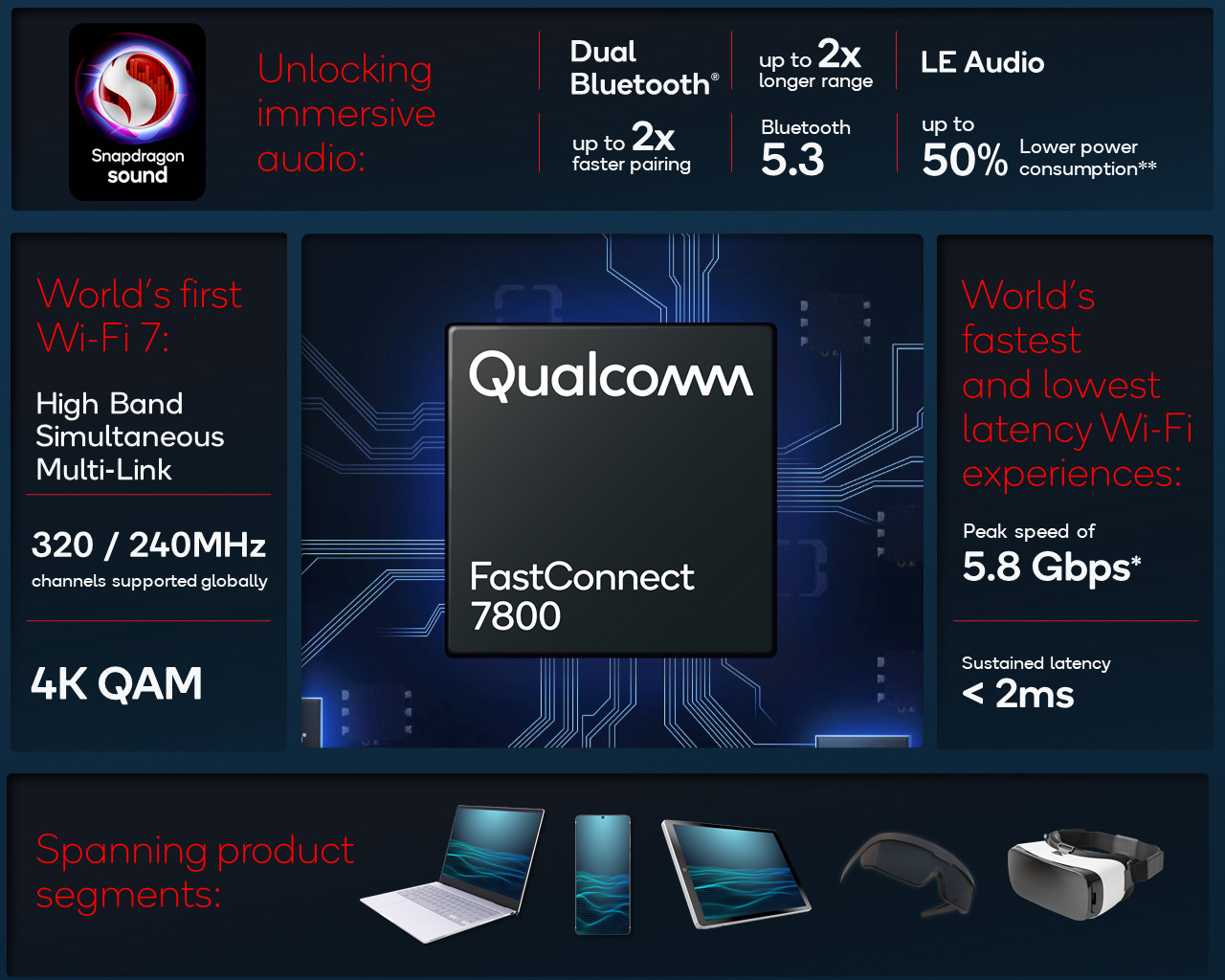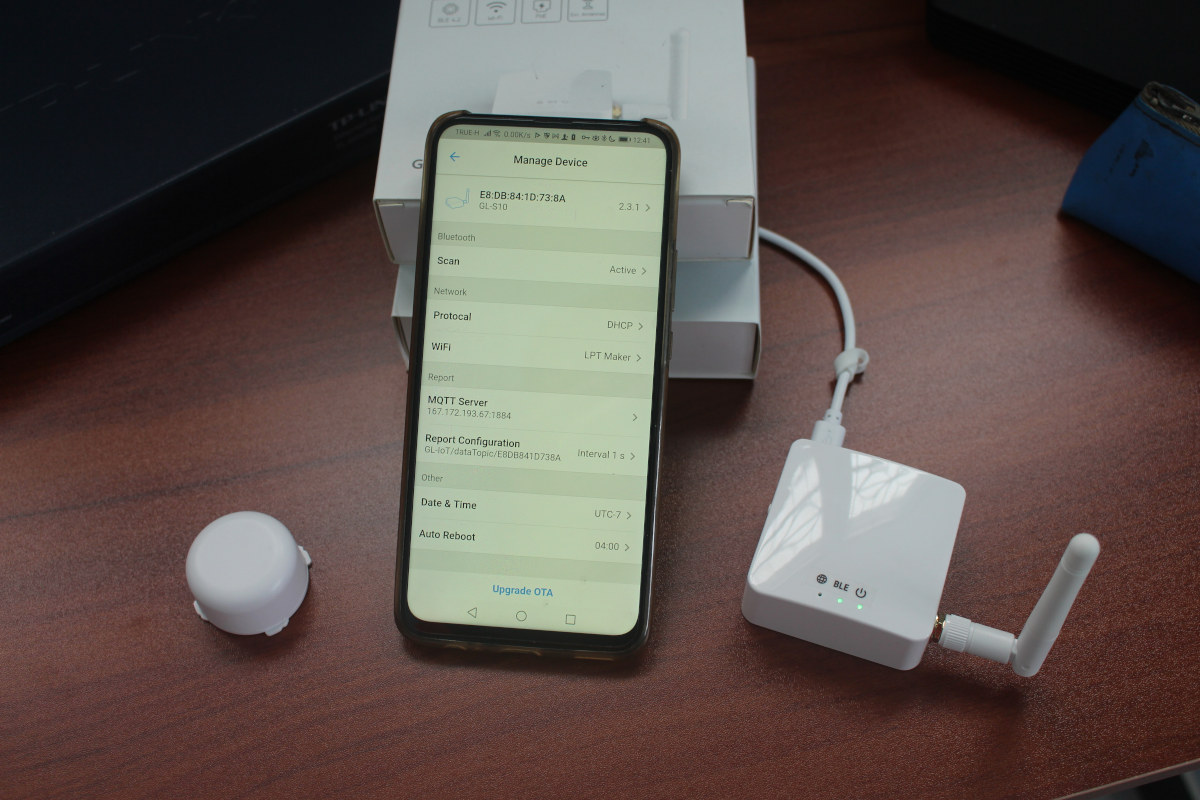Fanstel BT840XE is an nRF52840 Bluetooth 5.2 LE module with a power amplifier designed for transmission at over 4500 meters, and some deployments with two BT840XE modules and 0Dbi antennas even reach over 10 km. At home, I can use my Bluetooth headset about 6 to 8 meters from my phone before the audio starts cutting, and most Bluetooth devices have an advertised 10-meter range, although Bluetooth class 2 devices could transmit up to 100 meters away. But with Bluetooth 5, the wireless standard improvement meant it was not possible to get four times the range, and/or some further extended the range of their hardware with a power amplifier as we’ve seen with the RFCat N32 board a few years ago. Last week, I got contacted by a company called RF Star about a Texas Instruments CC2652P multi-protocol mobile with PA (power amplifier) that could achieve a range of 500 […]
MangoPi MQ Pro – A $20 RISC-V alternative to Raspberry Pi Zero W
MangoPi MQ Pro is an Allwinner D1 RISC-V SBC that offers an alternative to Raspberry Pi Zero W with the same form factor, and most of the same features including WiFi and Bluetooth connectivity The board has been in the works for several months, but the MangoPi MQ Pro board can now be purchased for around $20 on Taobao with 512MB RAM, and I’d expect it to show up on Aliexpress and/or Seeed Studio within the next few weeks. MangoPi MQ Pro specifications: SoC – Allwinner D1 C906 RISC-V processor @ up to 1GHz with HiFi4 DSP, G2D 2D graphics accelerator System Memory – 512MB or 1GB DDR3L Storage – MicroSD card socket Display – mini HDMI 1.4 port up to 1080p60 or 4Kp30, 20-pin MIPI DSI, CTP, LVDS FPC connector Camera I/F – 24-pin DVP/RGMII connector Audio – Audio out pads Networking 2.4Ghz 802.11b/g/n WiFi 4 and Bluetooth 4.2 […]
Raspberry Pi OS removes default “Pi” username, adds experimental support for Wayland
The Raspberry Pi Foundation has just released a new version of Raspberry Pi OS that removes the default username (pi) for security reasons, adds experimental support for Wayland, and lets people configure their Raspberry Pi with Bluetooth keyboard and mouse. Default username no more The most significant change in the new Raspberry Pi OS is the removal of the default “pi” user as several countries have legislation against default credentials for security reasons. That includes the Product Security and Telecommunications Infrastructure Bill (PSTI) in the UK, and California’s SB-327 IoT devices security law. Those laws mostly target default passwords, but removing a default username can be useful too to prevent force brute attacks. One consequence of removing the default username is that you won’t be able to skip the wizard in both the Desktop and Lite versions of Raspberry Pi OS since a new user needs to be created first. […]
Bluetooth LE audio evaluation kit supports nRF52840 Bluetooth Low Energy SoC
Software company Packetcraft has announced the availability of its Bluetooth LE audio evaluation kit for the Nordic Semiconductor nRF52840 Bluetooth Low Energy SoC used to let engineers evaluate the technology and develop Bluetooth LE Audio applications. Bluetooth LE audio was first announced in January 2020 together with the LC3 audio codec, and promised to deliver a much longer battery life for your Bluetooth headphone or battery-operated speaker, as well as support for multi-stream and broadcast audio. But it’s taken some time before being adopted in chips like Qualcomm QCC305x/QCC3056 or FastConnect 7800, as well as operating systems with, for instance, Android 12 being the first version of Android with LE audio support. The kit is comprised of three Nordic Semi nRF52840-DK boards each fitted with a Packetcraft audio interface board (AIB) equipped with two 3.5mm audio jacks for microphone and speaker, plus a ground loop isolator, three 3.5mm audio cables […]
Bluetooth battery tester also serves as DC programmable load
While it’s possible to quickly check a battery with a multimeter, the DL24MP-150W Bluetooth battery tester and DC programmable load allows testing of all sorts of batteries from a 18650 battery to a lead-acid car battery, monitoring of multiple parameters with voltage, current, power, capacity, temperature, and more, and simulating a discharge. You can visualize the parameters on the integrated color display, or through Bluetooth connectivity, check out the parameters and history in an Android smartphone or a PC running Windows. The program also shows additional parameters like estimated CO2 emissions and electricity charge, plus export of parameters to a spreadsheet for further analysis. DL24MP-150W Bluetooth battery tester specifications: Test voltage – 2 to 200V Current: 0.2~20A Discharge power – Up to 150 W Sensor – Temperature sensor Adapter boards Charging board with DC jack, mini USB, micro USB, and USB Type-C port Battery test board for 18650, 26650, 14505 […]
Qualcomm announces FastConnect 7800 WiFi 7 & Bluetooth 5.3 solution
Qualcomm has just announced the FastConnect 7800 WiFi 7 and Bluetooth 5.3 subsystem for smartphones, laptops, and virtual reality headsets promising peak speeds of 5.8 Gbps as well as sub-2 millisecond latency. We first detailed some of WiFi 7 features such as up to 40 Gbps link, and real-time capabilities when MediaTek showcased its future 802.11be compliant Filogic processor to customers, so it should be no surprise that Qualcomm had been working on its own solution, and announced it at Mobile World Congress 2022. Qualcomm FastConnect 7800 (WCN785x-1, WCN785x-5) specifications: Wi-Fi Standards – Wi-Fi 7 (802.11be), Wi-Fi 6E, Wi-Fi 6 (802.11ax), 802.11ac Wave 2, 802.11a/b/g, 802.11n Spectral Bands: 2.4GHz, 5GHz, 6GHz Peak QAM: 4K QAM Peak speed: 5.8Gbps or 4.3Gbps where the 6GHz spectrum is not available Features 4-stream Dual-band simultaneous (DBS) extended into the High Bands Multi-Link Operation (MLO) using 320 MHz (Single channel or 160 + 160) 8×8 […]
Review of GL.inet GL-S10 BLE to MQTT gateway with MQTT X open-source client
I started the review of GL.inet GL-S10 BLE to MQTT gateway in December by doing an unboxing and a teardown of the ESP32 gateway and BLE beacon provided. I’ve now had to play with the device and recommended app and software, and it took longer than expected since I encountered several issues during testing, most of which should now be resolved with new firmware, and documentation will be updated very soon. I mostly followed the steps from the detailed user manual for this review. The first time I did was to install the GL-S10 Tool App for Android, then power the gateway while pressing its button to enter pairing mode and soon enough the gateway was detected. Note you should probably not share the MAC address of your devices as there’s no security by default, and anybody would be able to access the information with the tools we’ll use below. […]
Silicon Labs BG24 and MG24 2.4 GHz wireless MCU’s quadruple AI performance at a fraction of the energy
Machine Learning is getting everywhere including into 2.4GHz wireless microcontrollers with SIlicon Labds BG24 Bluetooth and MG24 multi-protocol Cortex-M33 microcontrollers that improve AI/ML performance by 4 times using 1/6th of the energy thanks to a built-in AI accelerator. That makes the new microcontrollers suitable for battery-powered edge AI devices with support for Matter (coming soon) as well as PSA Level 3 Secure Vault protection. Silicon Labs expects the chips to be found in various smart home, medical and industrial applications. BG24 and MG24 share the same block diagram and the same specifications apart from the supported wireless protocols: MCU core – Arm Cortex-M33 @ 78.0 MHz with DSP instruction and floating-point unit Memory – Up to 256 kB RAM data memory Storage – Up to 1536 kB flash program memory Wireless CPU – Arm Cortex-M0+ 2.4 GHz Radio Performance -104.5 dBm sensitivity @ 250 kbps O-QPSK DSSS -104.9 dBm sensitivity […]


